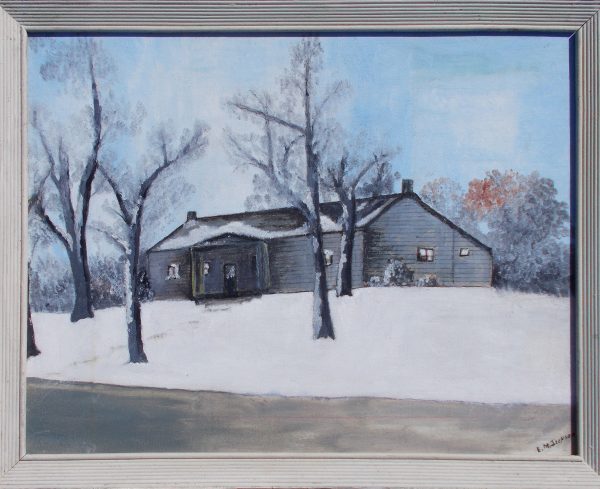
Copied and sometimes paraphrased from Winamac: A Flint Stone Found on the Tippecanoe by William L. Starr, published in 1983.
The first white family to come into the area which became Winamac was the Hacketts, who came from Delaware and built a cabin along the river north of town. They were shortly followed by the Demosses from West Virginia, Bruces from Pennsylvania and the Washburns from Ohio. These early settlers endured many hardships, and yet there was a wild charm, almost a spirit of romance, which pervaded life in the Midwest in those days. The land was divided between prairie, much of which was marshy and under water a good deal of the time, and dense forest of oak and hickory. The early settlers set about clearing and draining the land and building their log cabins, while at the same time providing food for the tables and keeping an eagle eye out for Indians.
Possibly the most influential and enterprising of these early settlers was John Pearson. He was born in Miami County, Ohio, in 1813 and married at the tender age of fifteen to Edna Farmer. Like so many, he felt the urge to move west, so early in 1838 he loaded his belongings in a covered wagon, and with his wife and five children, ranging in age from one to nine, they set out, not knowing where their wanderlust would lead them. The trip was slow and difficult since there were virtually no roads, but by late spring they reached the banks of the Tippecanoe and fortunately found an abandoned cabin into which they moved. It was located on the west bank of the river at the foot of what is now Spring Street. The cabin proved to be too small for his large family, so he soon built another more suitable one, further north near the band in the river.
John immediately became friendly with the Indians and began trading with them. Eventually he opened a store in his home where not only the Indians but other settlers came to barter and to visit. As a result, his home became known as the ‘tavern’. He apparently had some means because by 1839 he had taken possession of the south half of section 11, Monroe twp., and part of the SW ¼ of section 12 where his cabin stood, and together with four other men secured the western part of section 13 and the eastern part of section 14. This constituted about 1,000 acres and included all of what is now Winamac, plus some surrounding land.
These other men included Dr. Jesse Jackson, physician, and an employee of the Federal Land Office, and John Brown, John Niles, and William Polk from LaPorte. These five men had the property surveyed and laid out into 168 lots, the job being completed by April, 1839. The original town was bounded by Madison Street on the north, Logan on the west, Washington on the south and properties on the east side of Front Street (Riverside Drive) on the east. They provided for a courthouse square near the center of town, a lot for a school and two acres for a cemetery on the hills west of town. Also, not to neglect religion, they set aside land for a seminary north of Madison street.
It was in John Pearson’s home that a few of the early settlers met to sign the necessary papers to establish Winnemack as the county seat of Pulaski County and to elect the first constable, justice of the peace, road supervisor, overseer of the poor and fence viewer. A log cabin on the west side of Front Street near Spring Street was occupied by the officers until the first courthouse was built in 1849. In view of John Pearson’s early leadership and influence in the community, it is surprising that the town was not named Pearson or Pearsonville, but possibly Winnemack was their way of pacifying the Indians.
The first school was opened in Winamac in the fall of 1839, and an itinerant Methodist minister held services there the same year. Merchants began opening stores in the 1840’s, but it was not until 1855 that the first bank was opened. The first newspaper, the Pulaski Democrat, was published in 1858. New settlers kept moving in during the next forty years with the largest increase when the railroad was built. They came largely from Ohio and Pennsylvania, although other eastern states were represented, as well as Ireland, Germany, France and Canada.
By the early 1870’s, the population had reached 1,500. There were four churches in town; the Methodist, Catholic, German Reformed, and Christian. The Seminary of the Precious Blood in the north part of town was providing religious education. There were two flour mills, two printing shops, four dry goods stores, four groceries, and two drug stores. The next fifty years saw the building of the business blocks and homes, although the population growth slowed to a trickle and was still less than 1,700 by the 1920’s.
It may be of interest to note that the descendants of nearly eighty of the first families were still living in or near Winamac in the 1920s. Evidently, they found it to be a special place and were not inclined to leave.